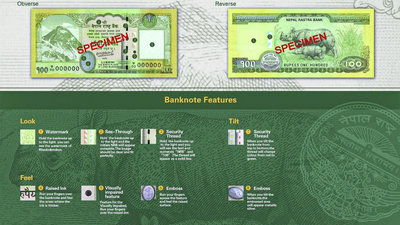Nepal’s central bank on Thursday unveiled new Rs 100 currency notes featuring a revised national map that includes the disputed Kalapani, Lipulekh, and Limpiyadhura regions, territories India has long maintained are its own. The move revives a years-long boundary row, with New Delhi previously denouncing Nepal’s 2020 map update as a “unilateral act” and warning that such “artificial enlargement” of claims is unacceptable, as reported by PTI.
The Lipulekh Pass lies in the far-western region near Kalapani, an area claimed by both countries. India considers Kalapani part of Uttarakhand’s Pithoragarh district, while Nepal asserts it belongs to the Dharchula district.The Nepal Rastra Bank’s newly issued Rs 100 note carries the signature of former governor Maha Prasad Adhikari and lists its issuance year as 2081 BS (2024). The redesigned currency incorporates the updated national map adopted during the K P Sharma Oli–led government, which in May 2020 secured parliamentary approval to include Kalapani, Lipulekh, and Limpiyadhura.Responding to questions over the revision, an NRB spokesperson said the map had already appeared on the older Rs 100 notes and has now been updated in line with the government’s directive, as cited by PTI. Nepal’s new Rs 100 bank note features Mt Everest on the left and a watermark of the national flower, the rhododendron, on the right. A faint green map of Nepal appears in the centre background, alongside the Ashok Pillar printed with the text, “Lumbini, the birthplace of Lord Buddha.”The reverse side carries an image of the one-horned rhino, along with a security thread and an embossed black dot to help visually impaired users identify the note.Of Nepal’s various currency denominations, such as Rs 10, Rs 50, Rs 500, and Rs 1,000, only the Rs 100 note carries the national map while the others do not feature it. Nepal shares more than 1,850 km of border with five Indian states, Sikkim, West Bengal, Bihar, Uttar Pradesh and Uttarakhand.



